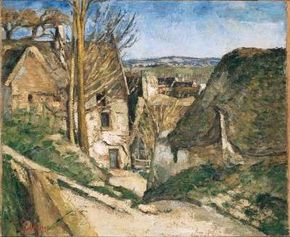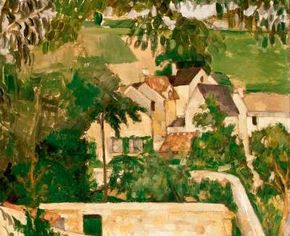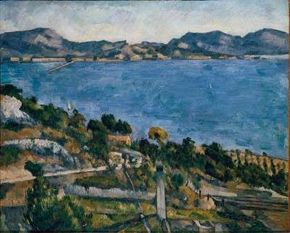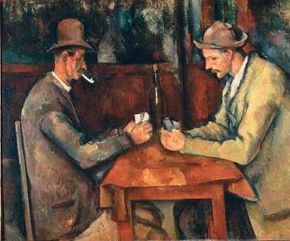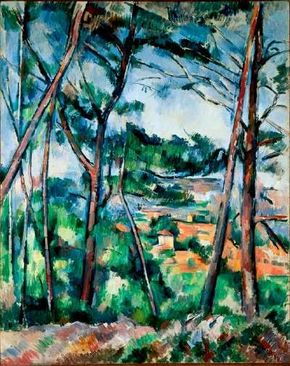Paul Cézanne was one of the original Impressionists, though unlike contemporaries such as Pierre-Auguste Renoir, Cézanne largely ignored settings of urban life in favor of landscapes and still life. Indeed, after the third Impressionist exhibition he would move away to Aix-en-Provence to work in isolation, never exhibiting with the Impressionists again.
Paul Cézanne's deep desire to pursue his independent vision prompted him to move away from Paris and withhold his works from the Impressionist exhibitions. However, he maintained a strong relationship with many of the core members, who always welcomed his support and his opinions.
Advertisement
Cézanne never rejected his public identity as an Impressionist, but from the outset he had pursued a different path. Rather than capture the fleeting sensations of nature, Paul Cézanne sought to develop a pictorial language that would parallel nature's underlying structural order. In his late career he limited his work to a select range of motifs: still life, the landscapes that surrounded his home in Aix-en-Provence, and a few figure compositions. Despite his isolation, however, Paul Cézanne's name will forever be linked with the Impressionists.
Follow the links below to learn more about some of the most famous works by Paul Cézanne, the independent Impressionist.
- The House of the Hanged Man: Cézanne's The House of the Hanged Man showed Cézanne's different approach from other Impressionists such as Claude Monet. Learn about The House of the Hanged Man by Paul Cézanne.
- Study: Landscape at Auvers: Study: Landscape at Auvers earned Paul Cézanne the most critical praise at the Impressionists first exhibition. Learn about Cézanne's 1873 painting Study: Landscape at Auvers.
- L'Estaque: View of the Bay of Marseilles: A visit to his mother led to Paul Cézanne painting L'Estaque: View of the Bay of Marseilles. Find out about this famous painting by Paul Cézanne.
- The Card Players: One of Paul Cézanne's favorite themes was men playing cards in a café. Read about The Card Players by Paul Cézanne, one of several variations on a scene.
- Landscape Near Aix, the Plain of the Arc River: Landscape near Aix, the Plain of the Arc River is another example of Paul Cézanne's independent style. Learn about Cézanne's 1892-1895 painting.
On the next page we'll look more closely at Paul Cézanne's Impressionist painting The House of the Hanged Man.For more on Impressionist paintings, artists, and art history, see:
Advertisement
